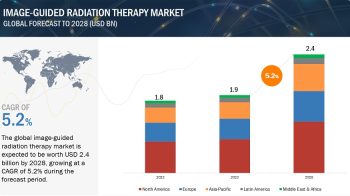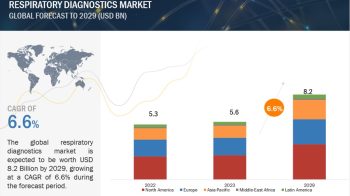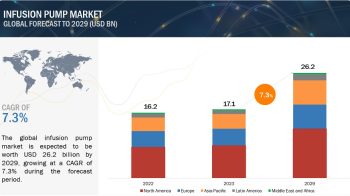
The growth of adhesion
barrier market is driven by the growth in the geriatric population and
corresponding age-related chronic diseases, epidemiological shift from
infectious to chronic diseases, growing volume of surgical procedures and
sports-related injuries, and increasing awareness about the medical
complications occurred due to post-surgical adhesion formation.
What the adhesion barrier market looks like?
The global adhesion
barrier market is projected to reach USD 806.4 Million by 2023 from USD
570.7 Million in 2018, at a CAGR of 7.2%.
Increasing
awareness about the medical implications of adhesions:
Post-surgical adhesions are a common complication in various
types of surgeries. The knowledge and understanding of adhesions and
adhesion-related complications have increased in the last decade. Various surgical
associations, as well as hospitals, are focusing on increasing the awareness
about post-surgical adhesion formation and the available anti-adhesive products
to control these complications.
According to a survey conducted by the European Society for Gynaecological
Endoscopy (ESGE), in the UK, over 85% of respondents agreed that adhesions
develop after any type of gynecological surgery, and more than 50% of
respondents considered that adhesions were the most common complication of
abdominal surgery. This is expected to increase the importance of anti-adhesion
products in surgical procedures. Moreover, growing awareness about
adhesion-related disorders in Asia Pacific countries such as India, Australia,
and China is expected to further drive the demand for anti-adhesion products in
the coming years.
Download PDF Brochure:
https://www.marketsandmarkets.com/pdfdownloadNew.asp?id=208132543
Adhesion Barrier Application:
The gynecological segment accounted for the
largest share of the market in 2017. Factors such as the increasing number of
C-section surgeries, rising incidence of pelvic/uterine cancer, and increasing
prevalence of conditions such as infertility and incontinence responsible to
drive this market.
Regional Growth and Demand of Adhesion Barrier:
Geographically, the global adhesion barrier market is segmented into North
America, Europe, Asia Pacific, Latin America, and the Middle East and Africa.
North America holds the largest share of this market in 2017. This is primarily
due to the increase in the aging population, increasing number of soft tissue
injuries and the consequent growth in the number of surgical procedures, higher
government expenditure on healthcare, and well-established healthcare services
across North America.
Asia Pacific region is expected to grow at a higher CAGR during the forecast
period. The rising healthcare expenditure in these regions, growing volume of
surgical procedures, and growing awareness about adhesions and their
complications are driving the growth of these markets.
Request Sample Pages:
https://www.marketsandmarkets.com/requestsampleNew.asp?id=208132543
The
major players in the adhesion barriers industry are Johnson & Johnson
(J&J) (US), Sanofi (France), Baxter International (US), C.R. Bard (US),
Integra LifeSciences (US), Anika Therapeutics (US), Atrium Medical Corporation
(US), FzioMed (US), MAST Biosurgery (Switzerland), Innocoll Holdings (Ireland),
Betatech Medical (Turkey), SyntheMed (US), Aziyo Biologics (US), Biom’up
(France), Terumo Corporation (Japan), and BMI Korea Co. (South Korea).


